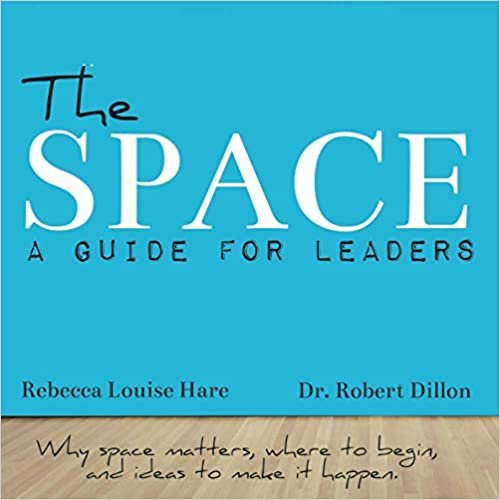
Rebecca Hare
Learning Spaces for Creative Educators
Eru námsrýmin að nýtast þér og nemendum sem skyldi? Eru þau að hjálpa eða hindra nám, samvinnu, skapandi hugsun og að byggja námssamfélag í skólanum? Þau geta það nefnilega og ættu að gera það! Í þessum fyrirlestri, sem er uppfullur af gagnlegum og praktískum hugmyndum sem þú getur nýtt í skólanum þínum strax, hugsar þú vonandi um hvernig rými geta stutt markmið, hvaða einföldu breytingar þú getur gert með stórkostlegum árangri.
Þessi fyrirlestur hentar öllu starfsfólki, á hvaða skólastigi sem er og eitthvað sem þú mátt ekki missa af. Hér er áratuga reynslu pakkað í 22 mínútur, og þú mátt varla blikka.
“Learning space design is not about making something pretty, it is about amplifying teaching and learning.”
— Rebecca Hare
Spurningar og svör frá Sli.Do
Q1: Tables and chairs take up way too much room in most classroom. Do we need a table and a chair or for every student?
This is a tough question, I would say no, we do not need a chair for every student, but we do always want to provide a space for every student to be able to work, learn and create - but that is not necessarily a table and chair. I would recommend to look at your space and see if you can create alternative seating/working spaces, like a standing “desk” which could be a countertop, or a soft space where students can learn and work on the floor so that when it is appropriate, students can have choices.
It is rare that ALL students want to sit at a table, but you would not ever want to create an environment in which students feel like they do not have a space in your classroom in which they can be successful.
The best practice, I believe, is to talk to your students about where they learn and work best and make adjustments to the room based on their ideas. Design the space WITH the students!. Maybe there is space for ten students to sit on the floor comfortably, ten spaces for students to sit at a traditional table and some stools and standing or counter-height spaces where some students have more freedom with movement.
Q2: Why is the teacher still the focal point of most classrooms, like we’re on stage? We are not rockstars!
So true! I think that it is because of a two reasons. First, tradition. That is the way it has been set up and we fall into the patterns of spaces in which we are accustomed. Second, because of technology and resources - before a teacher walks into a room the chalkboard, display area and technology has typically been set up in one area at the front of the room.
But we can disrupt this pretty easily without knocking down any walls. First, change where you do direct instruction. Can you detach yourself from cords (with screencasting from a mobile device or a clicker) and grab a cart on wheels? You can create a mobile teacher station that allows you to try out different areas of the room. I find it best to be in the back or the center (which is the heart of the space). Try it out for a few days and see where your best spot is in the space.
Next, think about your instruction. How much of the time are you presenting vs. how much of the time students are doing active work? If you can shift learning experiences to be more active (group work, discovery, creation) then you would naturally be moving around the room helping out your students.
Finally, if you can move your technology, an ideal situation is to have a few large screens around the room, or to cast directly to your students' devices. That shifts the focus from the “front” and brings the instruction to your students.
Q3: Is it good or bad to change the classroom environment regularly?
That depends on you and your students. If you are using it to drive instruction and engagement it will help reenforce the behaviors that you want. For example, at the beginning of the day pushing the tables to the side and setting up a circle can be a great way to connect. Then, you can move the tables into groups when group work happens. When shifts are purposeful, then kids get it and they also get the benefit of all the cues a new set-up provides.
If you are just starting out, I would pick three different layouts that are deeply connected to the actions, experience of learning and behaviors that you want to support. Take some tape and mark the floors and train your students to reorient the room. They will benefit from the movement and it helps provide them with transition into new expectations.
If instead, changes do not have a purpose, then it can have negative results. Kids should not be uneasy each time they walk into your space never knowing what you want them to do or where they should be. That is why always explaining your “why” and including their feedback is key. When they know that, they will begin to own the space with you and it will deepen their agency and connection as a learning community.
Hver er Rebecca Hare?
Eftir áratug sem hönnuður á Ítalíu, heillaðist Rebecca Hare af skólastarfi og hvernig hönnun námsrýma gæti umbreytt náminu sjálfu.
Hún starfar nú sem hönnunar-og listgreinakennari við Clayton Public School í St.Louis, USA. Ásamt því er hún rithöfundur og hefur gefið út tvær bækur um hönnun rýma fyrir bæði kennara en einning skólastjórnendur.
Rebecca býr í St. Louis, Missouri með tveim börnum sínum, manni og hundinum Winnie.



